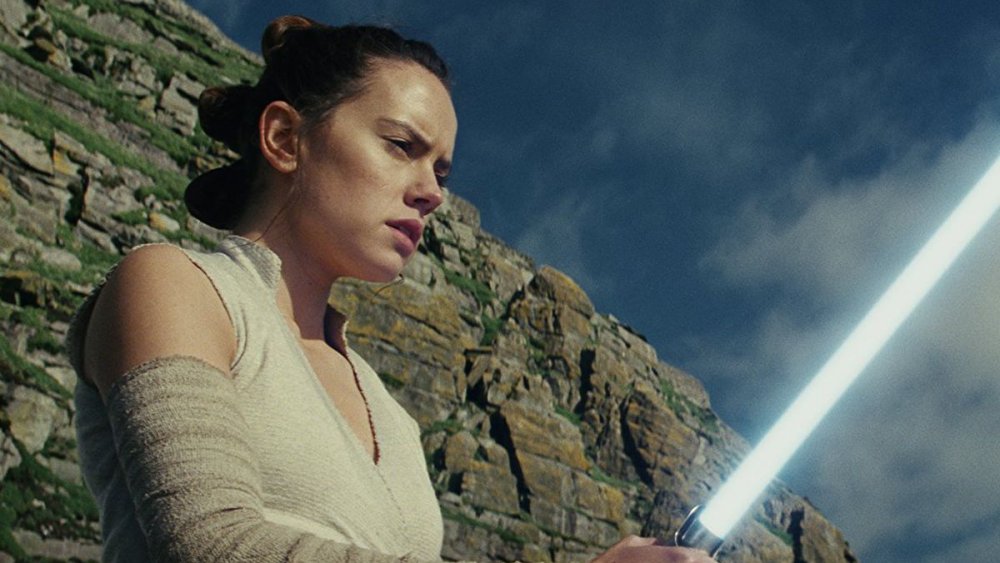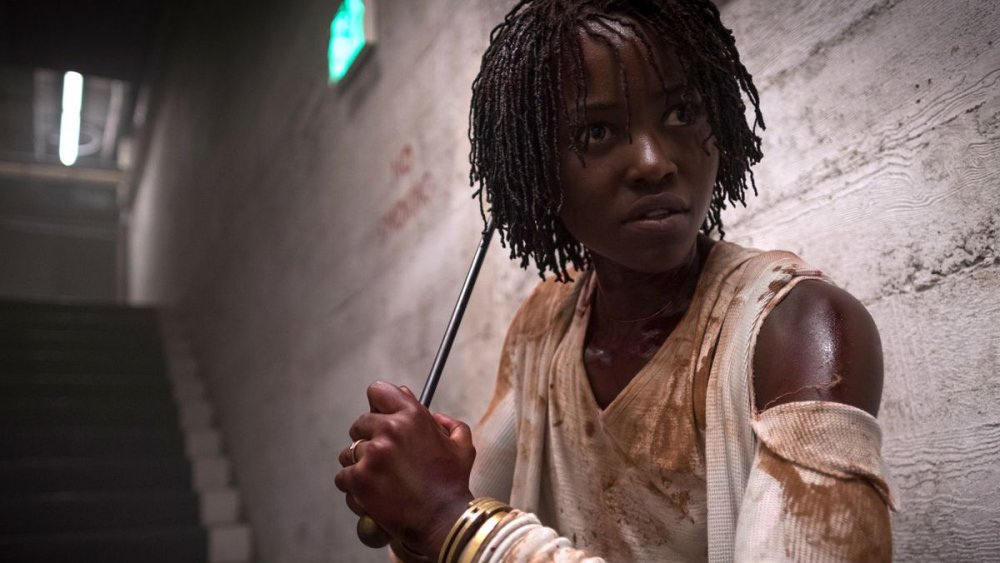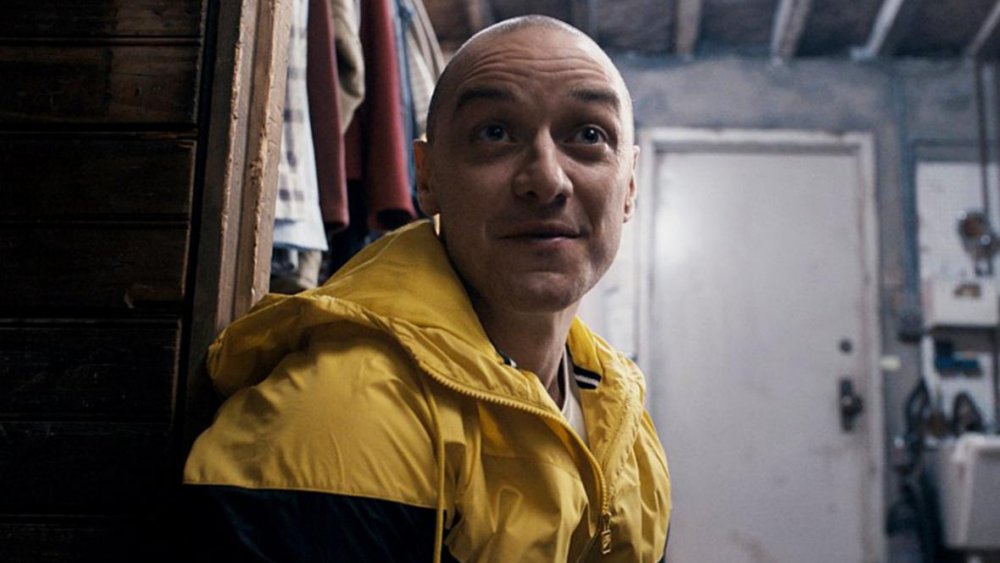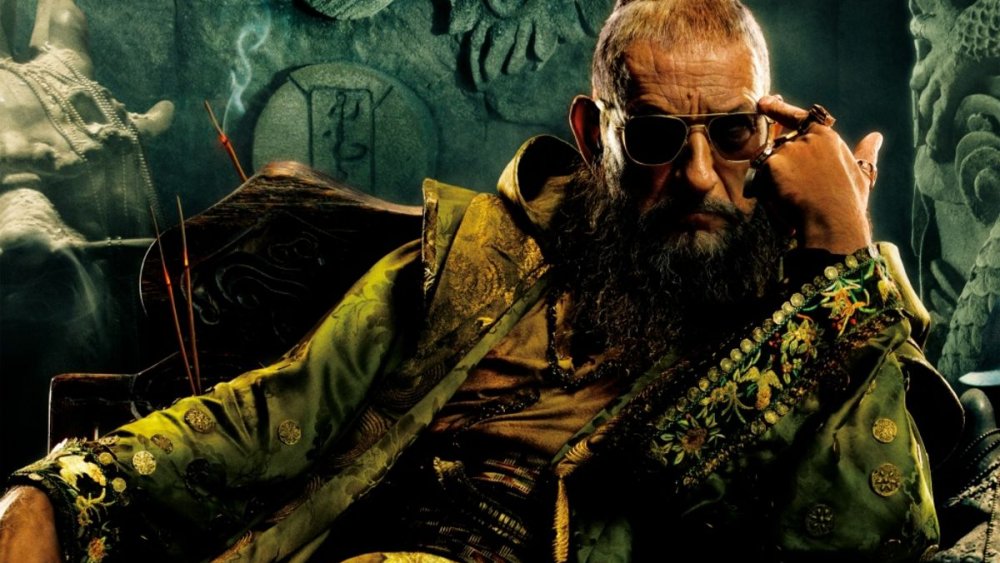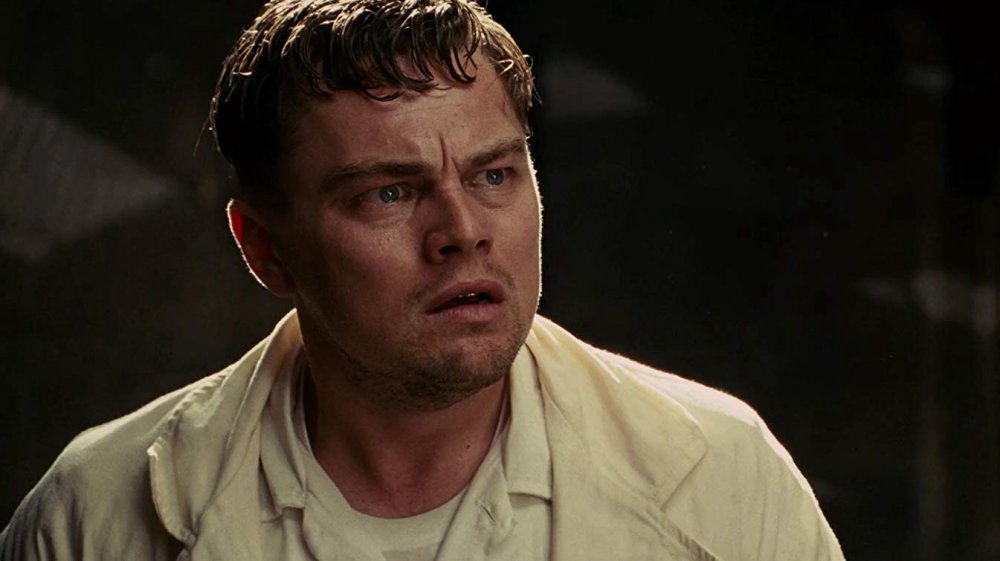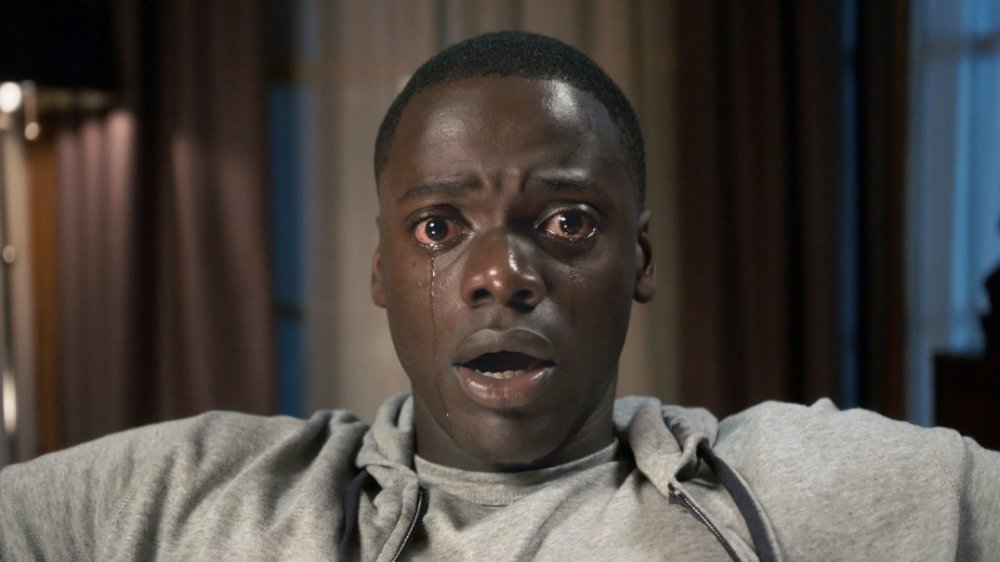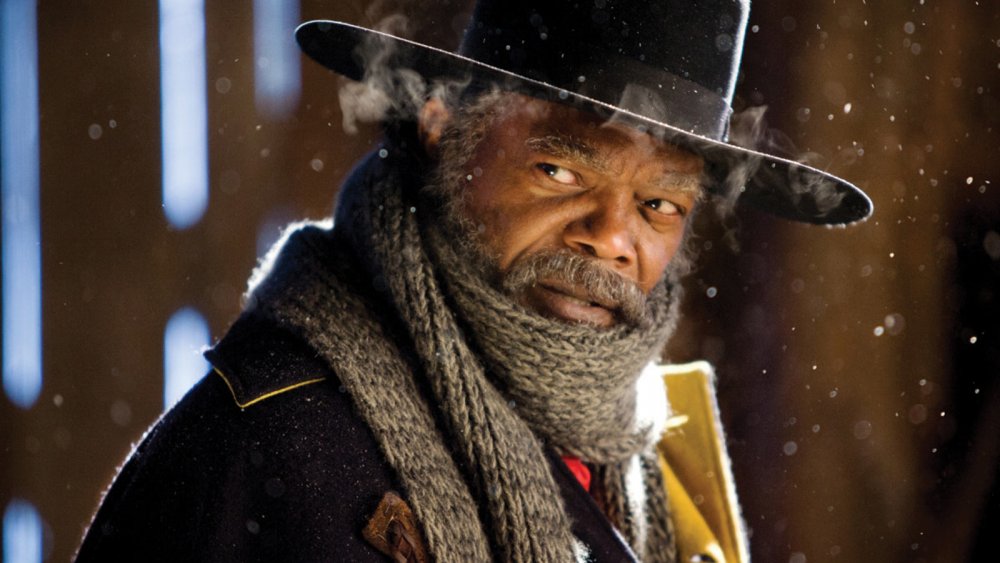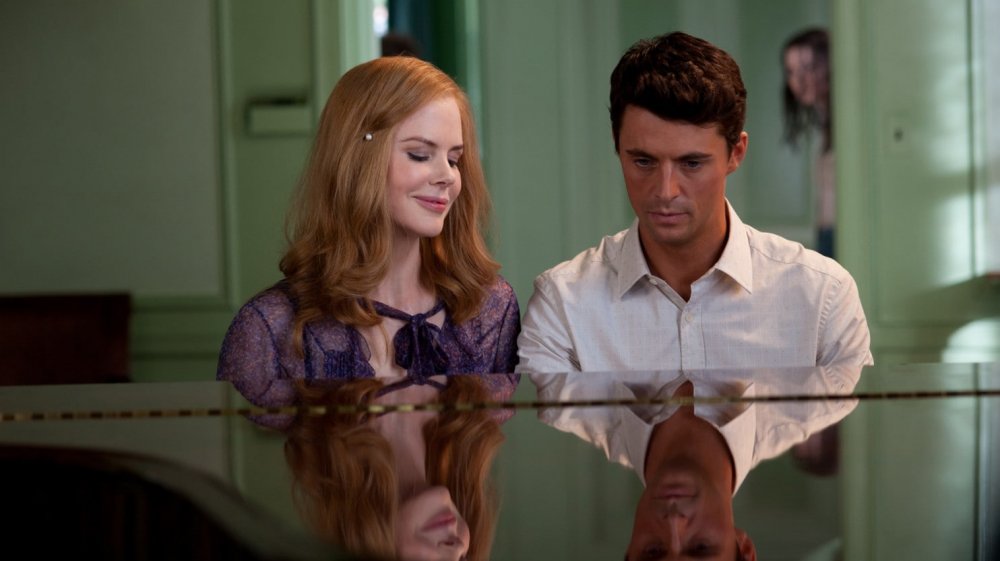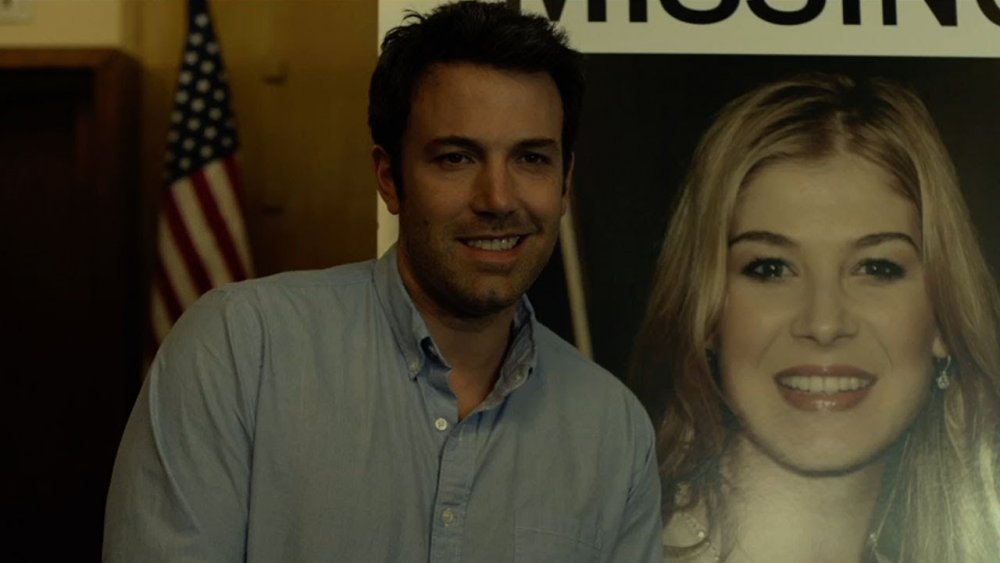The Best Movie Twists Of The Last Decade
The 2010s were a great decade for movies. From high-flying superheroic action films to dramatic works by modern masters, there are dozens of absolutely phenomenal films that were released during the decade. However, we're not here to talk about the best genre movies or best Oscar winners of the 2010s. Instead, we're here to talk about the movies that made us gasp in surprise and left our jaws on the floor.
The king of plot twists himself, M. Night Shyamalan made his triumphant return to shock us again, while Jordan Peele announced himself as a genuinely unique new talent. Some of the best and brightest in Hollywood managed to pull the rug out from under their audiences again and again in the last decade. Here are some of the best movie twists of the last ten years. Obviously, here's your requisite spoiler warning if you haven't gotten the chance to see any of the below films and still want to be surprised.
Snoke's plan goes up in smoke in The Last Jedi
When J.J. Abrams directed The Force Awakens, the first live-action Star Wars film with no active involvement from George Lucas, the biggest surprise for many fans was that it was actually pretty good. Abrams managed to bring in new characters that felt fresh and likable, while still paying homage to where the franchise had gone before. However, for some fans, Abrams paid a little too much homage in the film, setting the stage for a conflict that felt far too familiar.
Instead of the rebels fighting the Empire, the new trilogy would see the resistance fighting the First Order, with both groups of characters wearing fairly familiar-looking clothes. The franchise's new big villain, Kylo Ren, was purposely modeled after Darth Vader, with a similarly toxic relationship to a mysterious puppet master — this time called Supreme Leader Snoke instead of Emperor Palpatine. When Rian Johnson came on board to helm The Last Jedi, he exploded everything that fans thought they knew.
Nearly halfway through the film's runtime, Kylo Ren betrays Snoke, blasting a lightsaber right through him with the Force. Snoke wasn't to be the big bad of the new trilogy, and Kylo Ren wasn't going to get redemption through the betrayal of his evil master. It completely exploded fan expectations around what the new trilogy would (and could) be. It's rare for a franchise film with thousands upon thousands of dedicated fans poring over every marketing detail to still be surprising, but somehow, The Last Jedi pulled it off.
Identity confusion in Us
With the success of Get Out, writer and director Jordan Peele had a lot of expectations riding on his next film. It somehow had to live up to a horror movie that many considered to be one of the best of the decade, all while showing that Peele wasn't a one-trick pony. As it turns out, fans didn't need to worry; Us, which followed a family whose vacation is interrupted by mysterious and malevolent dopplegangers of themselves, proved that Peele is a true talent to watch.
Considering Peele's background in comedy, it's fitting how cleanly and subtly he's able to set up the punchline of Us. It all comes down to the subversion of expectations. Even in a film about mirror images, the Tethered, with the exception of Red (Lupita Nyong'o), are unable to talk. Add in their matching red jumpsuits, and there didn't seem to be any way for the film to pull the expected identity switcheroo.
But there's a reason that Red is the only Tethered who can talk, even if it is in a guttural, unnatural voice: she's not actually a Tethered at all. Red switched places with Adelaide (Nyong'o again) way back when they first met, receiving speech therapy and careful care from Adelaide's parents who mistook her silence for trauma stemming from the incident. The fake Adelaide grew up above ground, blocking out the truth about her upbringing, while the real Adelaide lived as a Tethered with her whole life literally stolen from her. It's a beautiful twist that completely changes the audience's understanding of both characters and only makes the film more engaging on a rewatch.
Split is a sequel to Unbreakable
M. Night Shyamalan has a reputation for delivering on shocking twists. In fact, the "Shyamalan twist" that shocked the nation in The Sixth Sense (Bruce Willis is a ghost) almost became a handicap for the writer-director as he seemed to struggle to add in twists to his later movies. Results, like "what if trees convinced people to kill themselves?" or "the old-timey village actually exists in the modern day," weren't always successful. Still, the Philadelphia filmmaker finally managed to deliver a true "Shyamalan twist" that no one saw coming in 2017's Split.
The film follows a man named Kevin (James McAvoy) with dissociative identity disorder who kidnaps Casey (Anya Taylor-Joy) and her friends to sacrifice them to a personality of Kevin's called the Beast. At first, the twist of the film seems to be that the Beast is real, as, when the personality emerges, Kevin is able to perform actions that seem impossible. Instead, the real twist is that the film takes place in a world with legitimate superpowers... and that the world is familiar to die-hard Shyamalan fans. As the credits roll, a news report about Kevin is watched by David Dunn (Bruce Willis), the protagonist of 2000's Unbreakable. Even as other studios search desperately for ways to build their own shared universe in the MCU-style, Shyamalan managed to sneak in a truly surprising stealth sequel to one of his most beloved films. A true Shyamalan twist indeed.
There's no real Mandarin in Iron Man 3
It can be extremely tough to throw a genuinely shocking moment into a superhero movie. For starters, there's usually source material in the form of comic books that any eager fan can pore over before the movie's release. Add in marketing materials and press junkets that tout most of a movie's plot before release, plus sites that eagerly leak the slightest rumor of a possible plot months in advance, and it's a wonder that any comic book movie manages to surprise an audience at all.
Iron Man 3 somehow managed to pull off a plot twist that surprised even the most knowledgeable Iron Fans by seemingly giving them exactly what they expected. In the comics, the Mandarin is one of Iron Man's most famous foes, and fans were eagerly awaiting his MCU debut. Ben Kingsley was tapped to bring the comic villain to life on the big screen, but the actual movie revealed a major departure from the source material: Kingsley wasn't actually playing the Mandarin. In fact, the Mandarin didn't exist at all; he was just a character invented by a war profiteer as a hodgepodge of racially-coded signifiers that would scare Americans into going to war to fight the super-terrorist. Even though that plot twist was eventually retconned to allow for the possibility of a real Mandarin, there's still no other plot twist in the MCU that so thoroughly subverted fans' expectations.
The detective did it in Shutter Island
Martin Scorsese is undeniably one of the greatest living American filmmakers, but he's not usually the type of filmmaker to depend on plot twists. From Taxi Driver to Wolf of Wall Street, Scorsese's more interested in gradual revelations about character motivations than the shock value of a good twist. However, there's one notable exception: 2010's Shutter Island, which sees Leonardo DiCaprio as a U.S. Marshall named Teddy Marshal on the hunt for a missing patient in an insane asylum in 1955.
As Teddy investigates the increasingly creepy island asylum, he begins to reveal what appears to be a grand conspiracy by the island's doctors. Through it all, he's searching for a specific patient named Andrew Laeddis who killed Teddy's wife years ago... and also may or may not actually exist. When the movie reaches its climax, it's revealed that Teddy is Andrew Laeddis, and the entire story up to this point has been a highly experimental style of therapy in an attempt to help Andrew/Teddy act out his psychosis through role play. While there are plenty of crime films that rely on a third-act reveal that the detective investigating the case was actually the killer, Shutter Island carefully seeds the clues to Teddy's insanity throughout the whole film. Like the best plot twists, you might be surprised by the reveal, but you can't argue that the film didn't prime you to suspect that something was wrong the whole time.
Rose knows the score in Get Out
Jordan Peele's directorial debut Get Out is a masterpiece for plenty of reasons. There's the expert pacing and control of tone that jumps from gut-busting comedy to bone-deep dread, the phenomenal lead performance from Daniel Kaluuya, and the striking images that immediately joined the horror genre hall of fame. However, for our money, the plot twist of Get Out might be one of the best qualities in the whole film.
Throughout Get Out, Chris (Kaluuya) has been dealing with a sense of unease around his white girlfriend Rose's (Allison Williams) family. That unease becomes even worse when Rose's mother hypnotizes him, supposedly to help him quit smoking. Through it all, Rose has been supportive to Chris' feelings, and immediately responsive when he tells her that something is wrong. That's what makes it hit even harder when Chris, while packing to leave, discovers a secret deposit of pictures of Rose's former black lovers, in direct contradiction to her earlier claim that Chris is the first black man she's ever dated.
It gets even worse when Chris, confronted by Rose's family in an obvious show of aggression, begs Rose to find the keys in her purse so they can leave. Rose finally drops the act, telling Chris, "You know I can't give you the keys, right babe?" The plot twist reveals that she's been a part of her family's twisted, racist aims the entire time. It's a plot twist to be proud of, and Peele certainly is. He told Entertainment Weekly, "I had done so much work to protect that twist — we all had — that I would lay down on my sword for that twist."
There are more than eight hateful characters in The Hateful Eight
You know a filmmaker has taken great pains to hide a film's plot twist when even the film's title and poster work to keep it a secret. That's what happened in Quentin Tarantino's pseudo-Western The Hateful Eight, which sees a group of rough-and-tumble types forced to share a cramped shelter as they wait out an oncoming blizzard. John Ruth (Kurt Russell) is en route to deliver Daisy Domergue (Jennifer Jason Leigh), a captured bounty, but has a feeling that someone in the house is hiding their identity in order to free Domergue before he can drop her off. As the various characters are revealed to be increasingly depraved, the title seemingly becomes clear: eight hateful people are trapped together until something explodes.
That's what it seems to be, at least, right before Domergue's crew emerges from a hidden basement to try and free her. Like John Carpenter's The Thing, an obvious influence on the film, characters and viewers alike had spent most of the movie's runtime trying to figure out who was an impostor among the eight strangers. In actuality, it didn't matter who was an impostor, because there was always more danger than just those eight people. Tarantino's always been a sly writer, but, to misquote Aldo Raine's last lines in Inglorious Basterds, this might be his masterpiece.
The uncle in Stoker is creepy in more ways than one
The only thing more surprising than the central twist of Stoker is the talent involved with its creation. Directed by Chan-wook Park (Oldboy), written by Wentworth Miller (The Flash's Captain Cold), and starring Mia Wasikowska, Nicole Kidman, and Matthew Goode, Stoker follows a girl named India who, just after her 18th birthday, discovers that her father has died in a horrific car accident. Shortly after, she's introduced to her uncle Charlie, who has supposedly been traveling the world since India's birth.
Beyond Charlie's increasingly uncomfortable romance with India's mother, there's something not quite right about the prodigal uncle. After she watches Charlie brutally strangle a boy that attacked India, she investigates her father's old study looking for clues about Charlie. What she finds is a huge stack of letters from Charlie addressed to her, detailing his trips around the world and encouraging her to one day share in his adventures. The problem is that they all have the same return address: a mental hospital. India realizes that Charlie killed his younger brother when they were children and has spent the intervening decades living in an insane asylum. When he was released, he murdered India's father, all in order to finally take India away on his (clearly homicidal) adventures. While the movie started as a gothic horror with dreamy surrealism, the plot twist immediately introduces a more pressing and immediate threat.
A real-life story of Three Identical Strangers gets even stranger
One of the most jaw-dropping twists to happen on screen this decade actually happened in real life nearly half a century ago. The documentary Three Identical Strangers chronicles the bizarre story of triplets who were separated at birth and raised unaware of each other's existence until two of the brothers stumbled across each other in college. Not only were the brothers themselves unaware of their status as triplets, but so were the individual families that raised them.
As the documentary continues, it's gradually revealed that there was an active and malevolent force involved in their separation. Their disparate childhoods, it turns out, were the product of an experiment meant to study the effects of nature versus nurture across identical siblings. In fact, they weren't the only ones; there were possibly dozens of other twins and triplets separated at birth as part of this massive study. What started as a heartwarming story of siblings finding each other at random becomes a horrifying chronicle of the lengths to which unethical scientists will go to test a hypothesis.
The aliens teach us to perceive time differently in Arrival
Denis Villeneuve's Arrival follows Louise Banks (Amy Adams), a linguist tasked with communicating with the sudden emergence of alien life. The creatures themselves are horrifying cephalopod-esque creatures who seem to communicate in strange circles. Louise eventually realizes that the circles are a clue to how to read the aliens' language — not in a linear fashion, but all at once. It's a reflection of the aliens' relationship to time, letting them see all of time simultaneously. However, the big twist is that Louise's revelation gives her the equivalent ability, hardwiring her brain to see both past and future. That's when she realizes that the child in the visions she's been experiencing is actually her own, not yet born.
The twist completely rewrites the audience's own relationship to viewing time in the same way that Louise's perspective was changed by the aliens. Arrival's non-chronological pacing becomes a reflection of the way the aliens relate to time, which not only helps the viewer better relate to Louise, but also makes the film even more engaging to rewatch.
Amy's not actually gone in Gone Girl
In Gone Girl, Nick's (Ben Affleck) wife, Amy (Rosamund Pike), disappears without a trace. As the disappearance draws scrutiny from both the public and the police, it soon becomes clear that Nick is the prime suspect in Amy's murder, and for good reason. Signs of a poorly concealed struggle are discovered, all while Nick seems to be withdrawn and apathetic at the idea of his wife's death. So far, a pretty standard murder mystery, right? Not quite. See, Amy isn't actually dead, and she definitely hasn't been disappeared by her murderous husband. Instead, Amy faked her own death as punishment for Nick's infidelity. In effect, the titular gone girl was never actually gone at all.
It's a brilliant twist in the Agatha Christie tradition; convince the audience that they're watching a murder mystery when, in reality, the only mystery is why there was never a murder in the first place.

